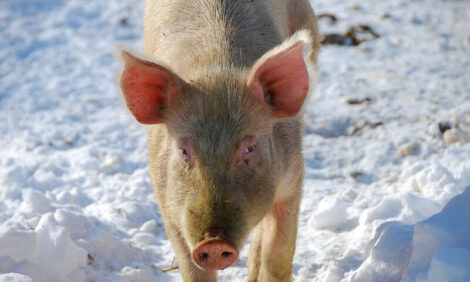



CME: November Hog-Corn Ration Up from October
US - First a couple of ‘housekeeping“ items of sort — Iowa State University’s Center for Agricultural and Rural Development (CARD) has decided to cease regular publication of Iowa Ag Review, a great source of rigorous yet layman-friendly economic analysis that we have plugged on several occasions in DLR, report Steve Meyer and Len Steiner.But do not despair, CARD will be replacing the Review with CARD Policy Briefs “when a topic or issue seems ripe for analysis or when CARD research needs to reach a broader audience.” CARD will distribute Policy Briefs through its website and is compiling a contact list with which it can alert interested readers that a new Brief has been released. If you want to be included in that list, send your e-mail address to [email protected]. We’re glad that CARD’s excellent work will still be available and urge you to take a look at it.
We mentioned on Tuesday that, while prices of corn and soybean meal may be lower than the extraordinary levels of last summer, the ratios of livestock prices to feed prices still remain below their long-term levels. The charts below show monthly observations of these ratios for fed cattle and hogs through November. The ratios for both species did, in fact, improve in November but the gains were quite modest relative to the levels needed to suggest profitability. November’s Hog-Corn ration was 11.0, up from 10. per cent in October and a dismal 9.6 one year ago. The Steer & Heifer-Corn ration in November was 23. per cent, just 0.1 higher than in October but over 2 points higher than last year’s 21.3. So, things are a bit better but this is akin to now hitting your finger with a smaller hammer — it might hurt less but it still hurts, especially when the soreness caused long-term finger-smashing is considered! It is clear that these indicators of profitability remain near their lowest levels ever. The length of time at these levels is especially apparent for hogs, where the ratio has been below the historical “profitable” level of 18 or 20 since October 2006 when corn prices first began rising above historic norms. The cattle ratio has been below 30 — which is marginally acceptable for feeders — since late 2006 as well.

Do these ratios mean as much as they once did? Probably not, because there are not near as many farmer-feeders who are deciding whether to sell cash corn or “walk it off the farm” after feeding it to livestock. While variable costs do, in most cases, represent a lower proportion of total costs than they did when facilities were not as sophisticated and expensive as they are today, one must remember that variable costs are still the sole source of cost variation and are thus still the determinant of whether to continue operations or shut down. And feed and corn are still the largest components of variable costs. Have DDGs made a difference? At some times of the year, yes. But DDGs are still by and large priced off of corn and soybean meal values — so the ratios shown below still approximate profits, no matter the feed source.








